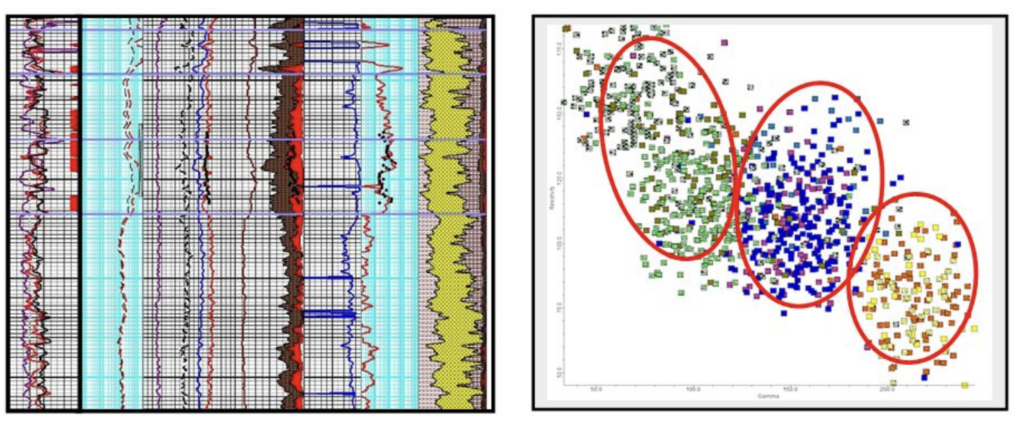Rock Physics Analysis
Application of rock physics principles is very important as it creates a relationship between well and seismic data, and serves in forward model building and calibration purpose. From rock property analysis, we can conveniently carry out forward modeling through arbitrary variations of rock and fluid constituents including porosity. This allows an interpreter to calibrate seismic attributes at well locations to known reservoir parameters and then to estimate reservoir parameters at potential exploration zones.
We are very experienced in rock physics analysis involving fluid substitution modeling, seismic modeling and crossplot analysis. Due to the fact that rock physics analysis is log based, we put together suites of well logs with particular attention paid to commpressional wave velocity Vp, shear wave velocity Vs and density log curves. If appropriate, we can depth-shift the seismic rock properties to bring them into alignment for improved synthetic generation.

Rock Physics Analysis and Lithology discrimination from crossplot analysis
The methodology towards our rock physics analysis includes:
- Using seismic rock properties, we perform an important rock physics interpretation step called Velocity Diagnosis in Vp (and Vs) vs. Porosity space to characterize not only the role of diagenesis, but also porosity and clay content in potential reservoir sands.
- Once a rock physics model(s) has been selected, the third and crucial step consists of forward modeling each of the seismic rock properties over a range of porosity, clay content, and hydrocarbon type.
- We generate a complete set of tables of Vp, Vs and density vs. porosity, clay content, and hydrocarbon type. In addition, we create rock properties for brine saturated sands.
- As a valuable interpretation aid for future direct hydrocarbon detection endeavors, we also produce a catalog of AVO signatures.
- Finally, we create seismic attribute and seismic rock property cross-plots to determine those attributes capable of distinguishing hydrocarbon from brine filled sand. Understanding these relationships leads to a better estimate of hydrocarbon content within a rock layer.
- The ultimate objective is to develop a deep understanding of the rock and fluid models that describe the seismic response to realistic hydrocarbon reservoirs under a variety of conditions.

